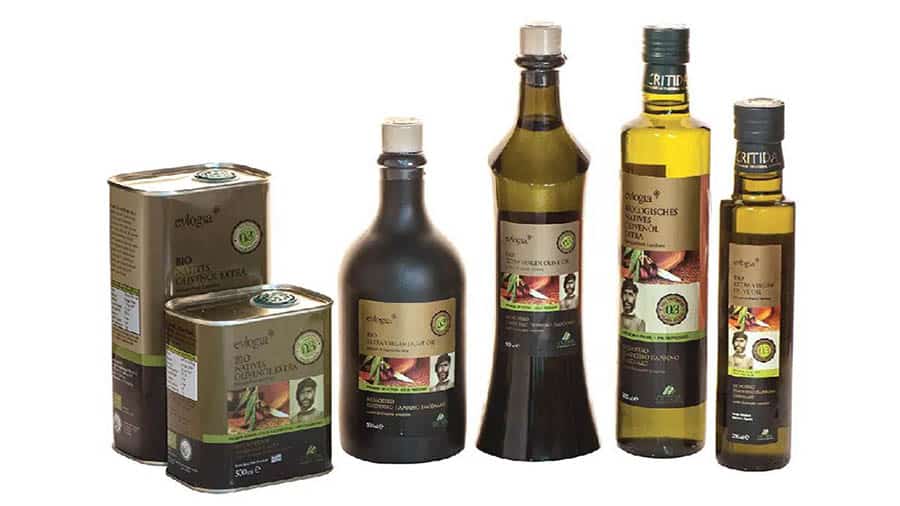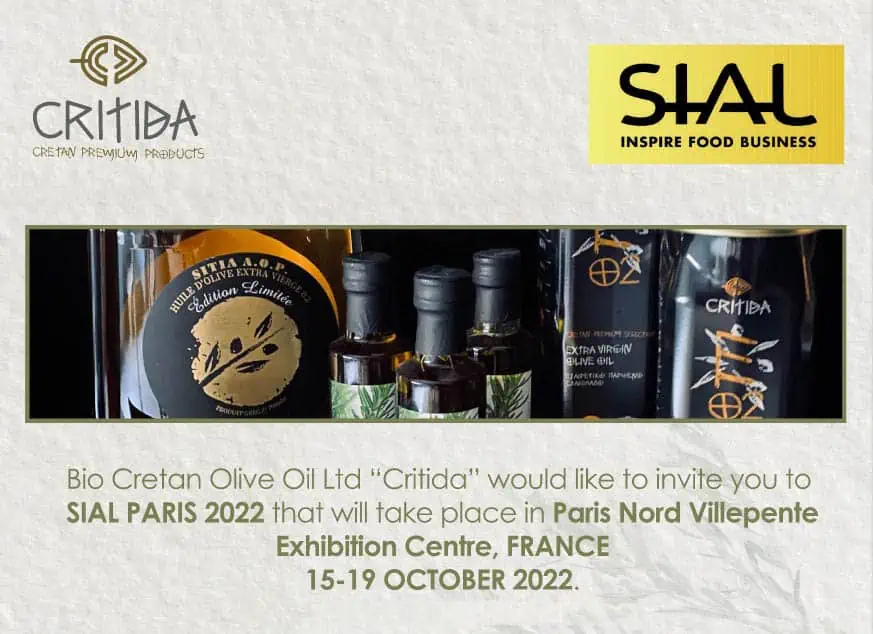Olive Oil Properties, Ingredients and Types of Olive Oil
Olive Oil Properties - Olive Oil Ingredients - Olive Oil Types
Sun, stone, drought, silence and solitude: these are the five ingredients that, according to folk traditions, create the ideal habitat for the olive tree. We treasure extra-virgin olive oil for its nutritional and salutary virtues. Researchers reports show that extra-virgin olive oil is the most digestible of the edible fats: it helps to assimilate vitamins A, D and K; it contains so-called essential acids that cannot be produced by our own bodies; it slows down the aging process; and it helps bile, liver and intestinal functions. The olive oil is also valued for its culinary virtues and organoleptic properties as well: flavour (sapor), bouquet (aroma), and colour (color).
Climate, soil, variety of olive tree (cultivar) and time of olive harvest account for the different organoleptic properties of different olive oils. Certain extra-virgin olive oils are blends of varieties of olives; other olive oils are made from one cultivar (olive tree variety). The European Community gives the following parameters:
- Extra-virgin olive oil: has perfect taste and its the highest quality olive oil; it has a minimum organoleptic rating of 6,5 out of 10, low acidity (1% or less), and is untreated.
- Olive oil: has a minimum organoleptic rating of 5,5, a maximum of 2% acidity and is untreated.
- The production of all other olive oils involves treatments.
Extra-virgin olive oil is produced in almost all regions of Greece. The leading producers are Crete island, the Peloponnese, Mytilene island, and Chios island. In Italy, Tuscany produces an assortment of extra virgin oils and olive oils that many do not resemble each other. In Umbria (Italy), it is so widely produced that it would be hard to imagine the landscape without the abundance of olive trees. Apulia is home to an impressive one-third of Italy’s olive trees. The top location is Puglia in south Italy.
The price of extra-virgin olive oil varies greatly. Two factors are influential: where the olives are grown and which harvesting methods are implemented. Certain locations yield more bountiful harvests; consequently their olive oil is sold for less. Olive trees planted near the sea can produce up to 20 times more fruit than those planted inland, in hilly areas like Tuscany. It is in these land-locked areas that the olive trees’ habitat is pushed to the extreme; if the conditions were just a little more severe, the olive trees would not survive. Extra-virgin oils produced from these trees have higher organoleptic scores.
Olive Oil Ingredients
What are the ingredients in pure olive oil? The chief active components of olive oil include oleic acid, phenolic constituents, and squalene.
Olive oil consists mainly of oleic acid (up to 83%), with smaller amounts of other fatty acids including linoleic acid (up to 21%) and palmitic acid (up to 20%). Approximately, 98%–99% of EVOO – Extra Virgin Olive Oil (the saponifiable fraction) is made up of triglycerides in the form of mostly MUFAs (oleic acid), considerable amounts of polyunsaturated fats (linoleic and α-linolenic), and small amounts of saturated fats (palmitic by 7,5%–20% and stearic acid by 0,5%–5%).
Thanks to its status as a spotlight food in the Mediterranean Diet (and the Greek / Cretan Diet in particular), and thanks to extensive research on its unique phytonutrient composition, olive oil has become a legendary culinary oil with very difficult-to-match health benefits by other edible oils. Among its extensive list of phytonutrients, no single category of nutrients of olive oil is more important than its polyphenols. The polyphenol content of this delicious oil is truly amazing!
Olive oil is very high in monounsaturated fats and contains a modest amount of vitamins E and K. Extra virgin olive oil is also loaded with antioxidants, some of which have powerful health benefits. The olive fruit and compression-extracted olive oil have a wide range of therapeutic beside the culinary applications in human nutrition.
The list below shows some of the key polyphenols found in olive oil, organized by their chemical category:
| Simple Phenols | Anthocyanidins | ||
| – tyrosol | – cyanidins | ||
| – hydroxytyrosol | – peonidins | ||
| Terpenes | Flavonols | ||
| – oleuropein | – quercetin | ||
| – ligstroside | – kaempferol | ||
| Flavones | Flavonoid glycosides | ||
| – apigenin | – rutin | ||
| – luteolin | Lignans | ||
| Hydroxycinnamic acids | – pinoresinol | ||
| – caffeic acid | Hydroxybenzoic acids | ||
| – cinnamic acid | – vanillic acid | ||
| – ferulic acid | – syringic acid | ||
| – coumaric acid |
Most of the polyphenols in this list have been shown to function both as antioxidants and also as anti-inflammatory nutrients in the body. The very number and variety of polyphenols in olive oil helps explain the unique health benefits of this culinary oil.
The exact chemical composition of olive oil can vary depending on factors like the olive variety, climate and soil of the olive grove, growing conditions, harvesting methods and processing methods for the extraction of olive oil from the olive fruit.
Types of Olive Oil
Which are the types of Olive Oil?
Types of Olive Oil:
| Extra virgin olive oil | Extra virgin olive oil is the first press from olives & the highest grade olive oil. It has zero defects & an extremely low acidity of no more than 0,8%. It has a superior taste & a rich, fruity flavor. | Virgin & extra virgin oils are best uncooked in salads, drizzling over food (such as pasta) & for dipping breads. It is also the best oil to use in stews & casseroles. It adds harmony to dishes. |
| Organic Extra virgin olive oil | Extra virgin olive oil from organic farming, free of chemical agents – extra virgin olive oil produced from olives that have been grown and harvested in an organic manner. The growing, harvesting, manufacturing and packaging has been reviewed by an accredited organic certifying agency, and they document that every step in the process has been up to par | |
| Virgin olive oil | Virgin olive oil must have a good taste. It is slightly lower in quality than extra virgin olive oil; it has defects from 0 to 2,5 & has acidity of less than 2%. | Virgin & extra virgin oils are best uncooked in salads, drizzling over food (such as pasta) & for dipping breads. It is also the best oil to use in stews & casseroles. It adds harmony to dishes. |
| Ordinary virgin olive oil | Defects of 2,5 – 6 and contains no more than 3,3% acidity. | Suitable for frying & baking with. |
| Lampante oil | More than 3,3%. It is intended for refining or technical use & is not fit for human consumption. technical use & is not fit for human consumption. | Not fit for human consumption. |
| Olive oil | This is a blend of pure olive oils to add flavor & refined olive oils. No more than 1% acidity. | These oils withstand heat well & are suitable for frying & baking with. |
| Crude olive pomade oil | Intended for refining for either human consumption or technical use. It must have an acidity of less than 1,5%. | |
| Refined olive pomade oil | Crude oil which has been refined. | Suitable for frying & baking with. |
(what are the ingredients in pure olive oil and extra virgin olive oil? which are the olive oil chemical characteristics? https://critida.com/olive-oil-ingredients-composition/ )

CRITIDA BIO CRETAN OLIVE OIL - Producers of Premium Cretan Culinary Products: Our Food Products are EXPORTED WORLDWIDE to 40+ countries, since 1998 - Join Us!
We are a centuries-long family company (est 1912) in the production of EVOO Olive Oil on the island of CRETE in GREECE. Our Premium Cretan extra virgin olive oil and culinary food products are exported in 40+ countries worldwide to a carefully selected network of partners. CONTACT US, BE OUR NEXT VALUED BUSINESS PARTNER ! for Extra Virgin Olive Oil (EVOO) - Organic (Bio) Extra Virgin Olive Oil (Organic EVOO) - Greek Table Olives - Balsamic Vinegars - Delicatessen, all from CRETE GREECE
Related posts
Critida Bio Cretan Olive Oil at Food Expo Athens Greece 2022 trade show
Critida Bio Cretan Olive Oil will participate in Athens Food Expo Greece 2022 the trade fair f
Critida Bio Cretan Olive Oil at SIAL Paris 2022 Food Trade Show
Critida Bio Cretan Olive Oil will participate in SIAL Paris 2022 the trade show for food and b
Summer Fancy Food Show 2022 New York USA
Our company CRITIDA BIO CRETAN OLIVE OIL will participate in “Summer Fancy Food Show 2022̶
History of the Olive Tree and Olive Oil
History of the Olive Tree According to scientists, the exact place where the olive tree was found fo





